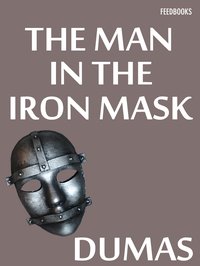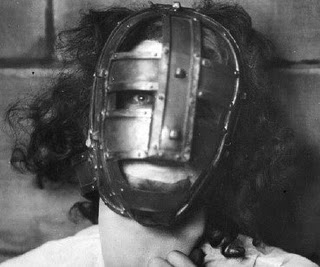Since the beginning of the iron mask mystery authors and political pundits have tried to solve the puzzle by trying to answer the main questions:
Why was the prisoner masked?
Why not just kill him?
And why such enormous secrecy?
Just who was the man with the iron mask? The answers still remain largely unknown even to this day.

Most people thought that the mask must have been used to conceal his identity. And in the days when mass communication didn't exist, easily recognizable faces -- ones that might ring a bell to average prison guard or person in the street -- were more than scarce.
So, as conspiranoids all over the world have reasoned, the prisoner had to have been been famous himself. Or at least, must have bore a strong resemblance to someone famous. Like, say, royalty.
The most famous theory is that the masked prisoner was Louis XIV's identical twin brother, who had to be hidden at birth so he would not get in the way of the succession, and then raised in secret away from court..
Alexandre Dumas developed this theory and published it as his novel "The Man in the Iron Mask" in 1850. At least a dozen movies in Europe and the US have been based on this romantic and tempting story since 1910.
Others argued that the man was actually Louis XIV's father, an idea which gained support due to the fact that it was common knowledge that Louis XIII and Anne of Austria hated each other. And Louis XIII was famously gay, so the birth of Louis XIV led to numerous interpretations of what had really happened.
This would explain the effort to conceal the prisoner's identity, as the truth would have destroyed the legitimacy of Louis XIV's claim to the throne, and (because of the King's respect for his own father) the comfort of the terms of his imprisonment.

All the conspiracy theories aside, there are two legitimate candidates for the identity of the Man in the Mask.
The first is Antonio Ercole Matthioli, an unscrupulous politician from Mantua, Italy. Matthioli double-crossed the French, selling their secrets to the Spanish so Mattioli was kidnapped by the French and thrown into nearby Pignerol in April 1679.
The name the Man in the Mask was buried under, Marchialy, could easily be a perversion of Mattioli which strengthens the argument but there is no more talk of Mattioli after 1694 so he could have died or never been transferred to the Bastille.
The other candidate for the role is a valet called Eustace Dauger.
It is highly likely that the name Dauger is false but there is still a question mark over who Dauger might have been. Dauger was allowed no contact with anyone in accordance with the King's arrest warrant. Dauger had to be fed by Saint-Mars himself, and the secretary of state writes to Saint-Mars, "You must never, under any pretenses, listen to what he may wish to tell you."
One of the most common theories about who Dauger was guesses that he was a valet named Martin, whose master was Roux de Marsilly, a French Huguenot who was trying to cook up a Protestant alliance against France.
Marsilly was publicly tortured to death in Paris in 1669, and his ex-valet Martin was imprisoned under the name Eustace Dauger. The powers-at-be must have concluded that Dauger knew some of Marsilly's plots and secrets, and he was imprisoned to divulge them.
Another theory says that he was a valet named "Danger" or "D'angers" who was hired to commit a poison a person in high offices. But he failed. He was imprisoned and kept silent so as not to incriminate the secretary of state.
It is possible that the Man in the Iron Mask is a legend that takes from the stories of both these men and makes one myth. We may never know, but the debate continues.